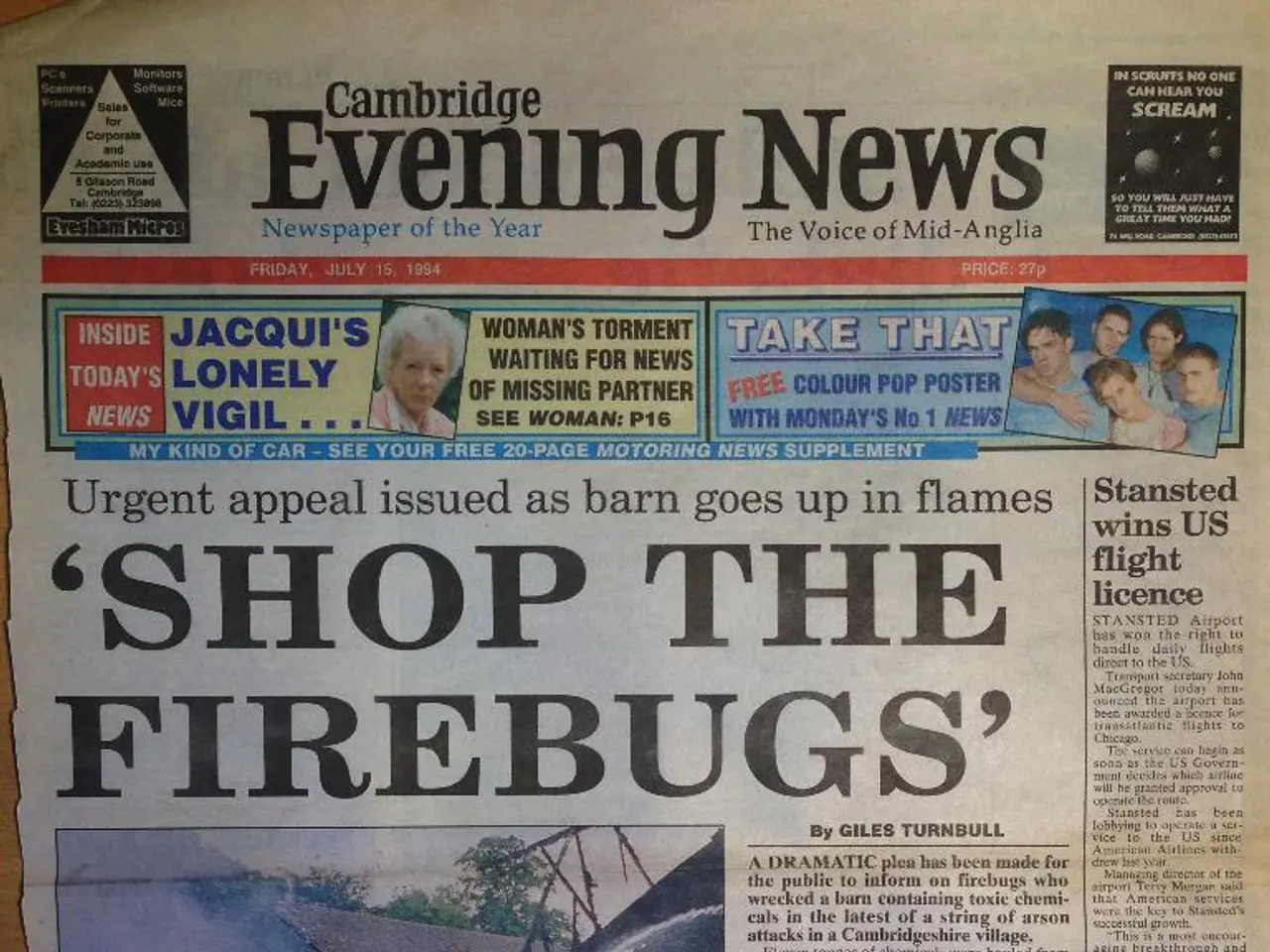Bracing for a Potential Avian Influenza Emergency in the United States
The H5N1 bird flu virus, which has been causing harm to various animal populations since 2022, has recently been detected in cows, ducks, and other animals. This rapid spread underscores the limitations of current containment strategies and the need for a comprehensive and proactive response.
The call for transparency, scientific expertise, and proactive policymaking from the Biden administration is paramount to address the systemic vulnerabilities that have allowed the virus to spread unchecked. However, the current administration is scaling back the emergency response to the H5N1 bird flu, with the CDC officially ending its emergency declaration that had been active since April 2024 due to a low and declining risk to human health.
While the CDC continues routine monitoring of H5N1 activity in animals and humans, focusing on surveillance in people with animal exposures and monitoring outbreaks in wild birds and poultry, the lack of robust testing and surveillance protocols for farm workers, who are among the most vulnerable to infection, further complicates efforts to track and contain the spread of the bird flu virus.
In an environment where access to healthcare is limited and immigration status can pose a barrier to seeking medical treatment, the potential for a widespread outbreak among human populations is a looming concern. The need for comprehensive and equitable testing and treatment protocols is essential to prevent the further spread of the bird flu virus and protect vulnerable communities.
The economic and political implications of a potential bird flu outbreak are significant. Widespread outbreaks in wild birds and dairy cows continue, which could have ongoing economic implications in agriculture that are monitored by the USDA. The concentration of poultry production in factory farms exacerbates the risk of rapid spread, which is an ongoing concern connected to industrial farming practices.
In terms of political decision-making and preparedness, the administration faces leadership challenges. The White House Office of Pandemic Preparedness and Response Policy remains without a formal head after the resignation of a key biosecurity expert, Gerald Parker, creating potential gaps in coordinated pandemic response planning. Previously, funding for avian flu had been almost doubled during the Biden administration’s final period, but stockpiled vaccines have not yet been authorized for wide use, reflecting a careful but uncertain stance amid evolving threat dynamics.
The need for open, unvarnished data to inform decision-making and containment strategies is paramount in the face of a rapidly evolving public health crisis. As the time to act is now, before the threat of bird flu becomes a reality that we can no longer ignore, it is crucial for the administration to take decisive action to protect the population from the potential consequences of a bird flu outbreak.
References:
[1] Centers for Disease Control and Prevention. (2025). H5N1 Avian Influenza. Retrieved from https://www.cdc.gov/flu/avianflu/h5n1-varient.htm
[2] Food and Environment Reporting Network. (2025). The Factory Farming Connection to the Bird Flu Crisis. Retrieved from https://thefern.org/2025/06/the-factory-farming-connection-to-the-bird-flu-crisis/
[3] Politico. (2025). Biden Administration Faces Leadership Challenges in Pandemic Preparedness. Retrieved from https://www.politico.com/news/2025/05/20/biden-administration-faces-leadership-challenges-in-pandemic-preparedness-00057206
- The rapid spread of the H5N1 bird flu virus highlights the need for food safety measures and health precautions.
- Science and medical expertise are crucial in devising effective strategies to combat neurological disorders like the bird flu.
- The environment plays a significant role in the transmission and mutation of viruses, as seen with the bird flu in various animal populations.
- Education and self-development about health-and-wellness, including zoonotic diseases, is essential for personal growth and global awareness.
- Mindfulness practices can help manage stress and anxiety related to health crises like the bird flu outbreak.
- Career development in medical fields can aid in the research and treatment of medical-conditions like the bird flu.
- Policy-and-legislation regarding bird flu containment and animal welfare is a hot topic in politics today.
- Online-education platforms offer valuable resources for learning about the bird flu, its implications, and potential solutions.
- General news outlets are crucial sources of information for understanding the current state of the bird flu and its potential impact.
- Crime-and-justice implications may arise from the distribution of illegal substances, such as certain medications, in the context of a bird flu outbreak.
- Accidents related to bird flu virus research or contaminated food products could lead to unforeseen consequences.
- Learning about the H5N1 bird flu virus and its characteristics is essential for lifelong-learning and ongoing comprehension of public health issues.
- The importance of skills-training in healthcare, agriculture, and policy sectors has become increasingly evident in the face of bird flu outbreaks.
- Sports events like football, Champions League, WNBA, baseball, hockey, golf, and tennis intertwine with discussions about the bird flu and its potential impact.
- Racing events like the premier league, NBA, grand prix, and mixed-martial-arts may be postponed or canceled due to the bird flu virus.
- Weather can impact the spread of the bird flu virus, with extreme conditions potentially exacerbating its transmission.
- Tennis tournaments and other outdoor sports may face weather-related cancellations as a result of the bird flu.
- Weather forecasting and sports-analysis programs use data to predict potential disruptions caused by the bird flu virus.
- Auto-racing competitions could face cancellations or postponements due to the bird flu, as witnessed in some European leagues.
- Basketball, MLB, NHL, and NHL games may be affected by the bird flu virus, due to players, coaches, or staff testing positive.
- The interconnectedness of various industries, from agriculture to sports, highlights the importance of a collective, proactive response to the H5N1 bird flu virus.







